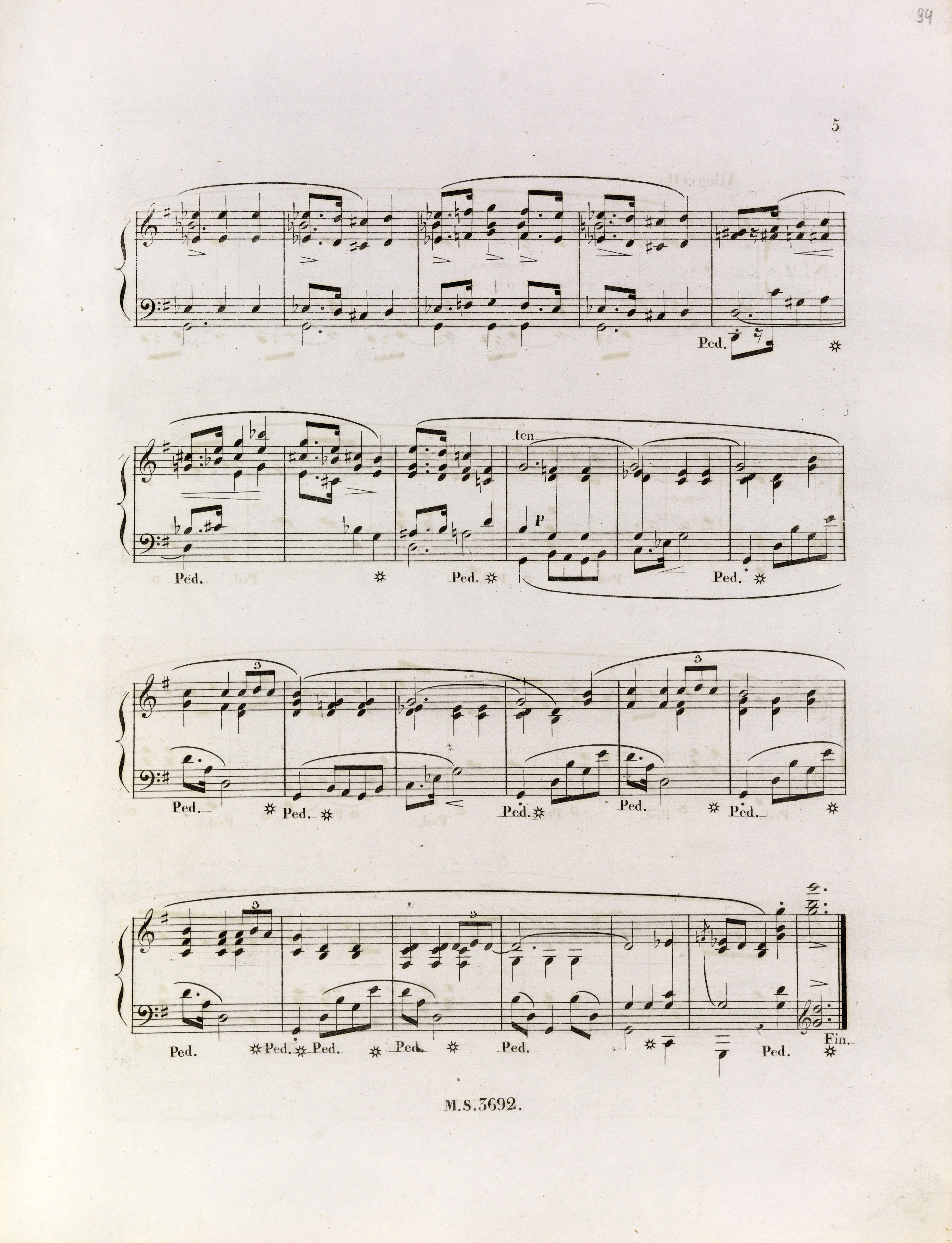Op. 2, Variations in B♭ major
Op. 10, 12 Etudes
Op. 11, Concerto in E minor
Op. 21, Concerto in F minor
Op. 22, Polonaise in E♭ major
Op. 24, 4 Mazurkas
Op. 25, 12 Etudes
Op. 26, 2 Polonaises
Op. 27, 2 Nocturnes
Op. 28, 24 Preludes
Op. 30, 4 Mazurkas
Op. 35, Sonata in B♭ minor
Op. 50, 3 Mazurkas
Op. 63, 3 Mazurkas
Op. 64, 3 Waltzes
(Op. 4), Sonata in C minor




Op. 50 No. 1, Mazurka in G major
The missing staccato dot over the bass D is probably an oversight of Chopin in [A2] or of the engraver of GE. Assuming that the c1 semiquaver is performed with the L.H. (in accordance with the notation), any other articulation than staccato is practically out of the question.
Compare the passage in the sources »
category imprint: Differences between sources
notation: Articulation, Accents, Hairpins

